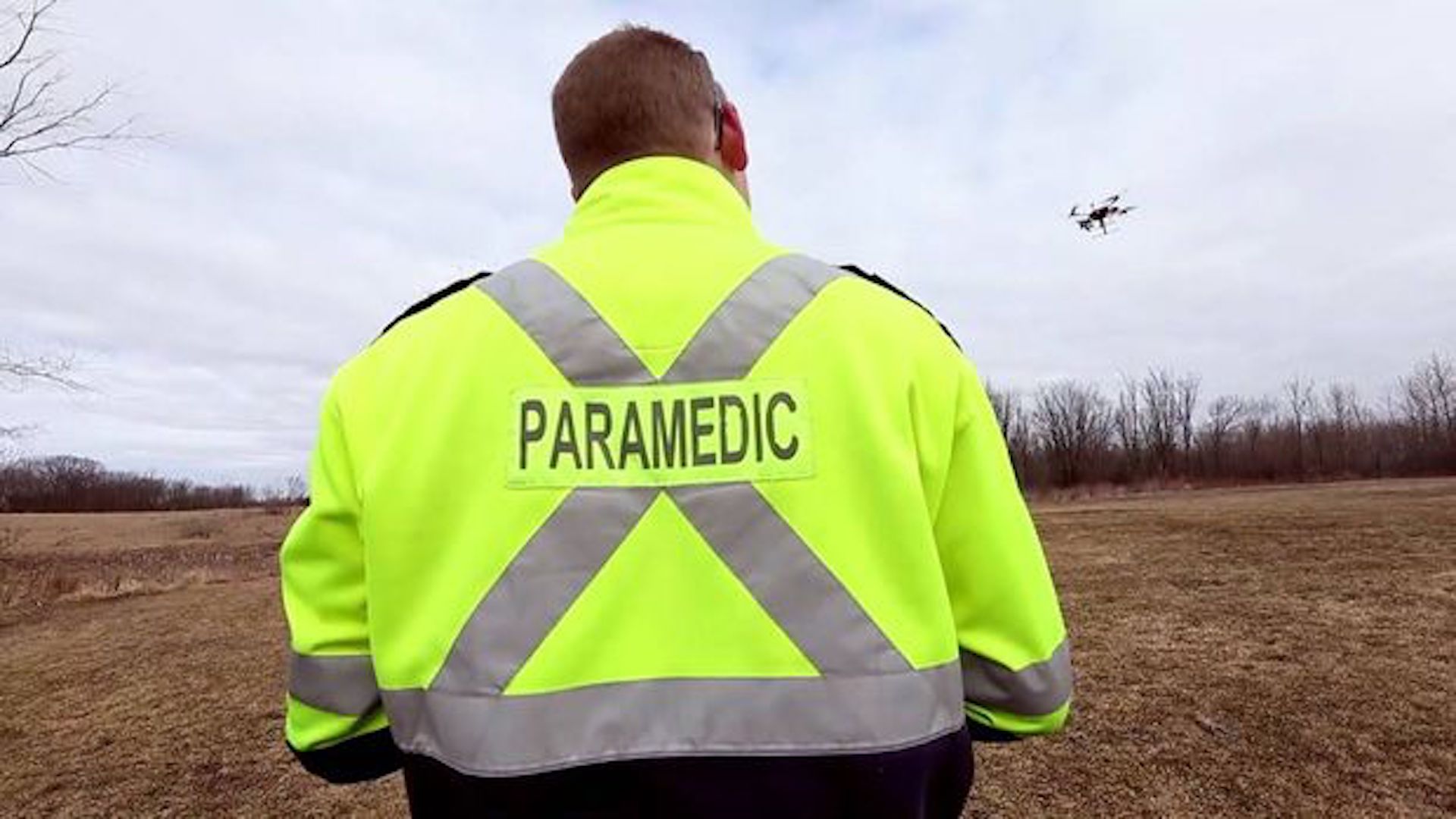

Canadian Paramedics in Eastern Ontario’s Renfrew County were some of the first in the country to garner permission from Transport Canada to fly unmanned aerial vehicles within the operator’s line of sight. Drones are helping paramedics do their jobs better, and this is only the beginning.
According to The Globe And Mail, while this alleviated certain first-response scenarios, chief paramedic Michael Nolan wasn’t satisfied, and eager to lift beyond-visual-line-of-sight restrictions in order to maximize future rescue operations. The drones in question are fitted with thermal-imaging cameras, allowing for useful digital vision when the human eye can’t compete. This allows paramedics to survey a crash-site at night, for example, and verify that there aren’t any unnoticed casualties on the wayside.
According to The Globe And Mail, after Michael Nolan fought to expand drone use for the rescue service, mainly by arguing against the BVLOS restrictions, the Renfrew County paramedics partnered with both the RCMP and Ontario Provincial Police, as well as with B.C.-based drone company InDro Robotics, and successfully attained permission to fly drones as far as four nautical miles. In Nolan’s mind, the ability to use UAVs during hazardous rescue operations has likely saved several lives already. “I think I can say that, because [the UAVs] have potentially saved the lives of emergency responders, by not having to put themselves in harm’s way,” said Nolan. But arriving at this point wasn’t easy, and there’s certainly still far to go.
Reportedly, the inspiration to infuse drones into the local rescue service began with one paramedic who had experience with UAVs during his time in the Canadian military. “The programs began with off-the-shelf technology that allowed us to test some of the concepts in our own backyard. At the time, the regulations and use of drones were very limited to hobbyists, but we recognized there was greater opportunity to enhance both the technology and the use of drones in the emergency-services context,” Nolan explained. This greater opportunity mentioned by Nolan has been comprised of drones scanning dangerous crash sites, finding missing persons in otherwise unnavigable terrain, and more.
Last year, we reported on Swedish rescue services fitting their drones with defibrillators for more rapid response to cardiac arrest. According to The Globe And Mail, Renfrew County paramedics are considering to follow suit. In any case, they’re already able to attach a flotation device to a UAV, pilot it to someone in danger of drowning, and lowering the device to save a life, a method that saved two teenager’s lives Thursday.
Regarding Renfrew County in Ontario as a testbed for paramedic drone-infused rescue operations, it’s certainly a difficult, somewhat treacherous landscape, navigation through which seems to have been made easier through drones.According to The Globe And Mail, it’s not only the largest county in Ontario, but contains more than 900 lakes, four river systems, and certainly isn’t famous for its comforting weather. If one were to fall through the ice on one of these lakes, a drone fitted with a rope or flotation device would certainly be more rapid and efficient than the traditional methods usually employed. Drones are like any other tool: highly useful in certain situations, and foolish not to employ when those arise.